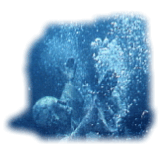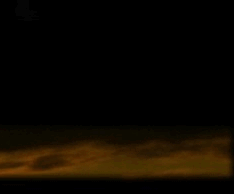|
“If Cayce could predict things and they came true, the idea was let’s use other psychics to take you out. Like dousing for water, they can go out and say ‘Look there. I feel something there.’ You don’t see anything under the water. You don’t see anything under the sand. But you dig and you find something.”— Peter Tompkins.
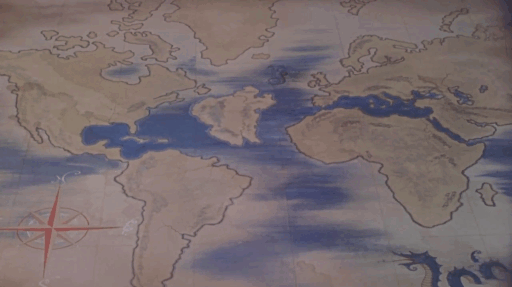
The tradition of legend in map form. . .
It begins in 1882. It really does. In that year Ignatius Donnelly published his acclaimed masterpiece Atlantis: The Antediluvian World. It was quite a scholarly work and a patchwork of vantage points. He postulated that Atlantis was the beginning of mankind and its destruction was recalled as the Biblical flood and in the worldwide deluge stories common to all peoples. Through linguistics, architectural styles, and other cultural similarities, he could accentuate the origin of all civilizations as rebuildings from the survivors of one single original culture.
Not exactly orthodoxy, by any means, both by academic or religious viewpoints, and neither fully embraced his views. But there were a few things that resonated. Biblically no one could say where the antediluvian world had been located since it was wiped out by a flood. And in 1882 many geologists did suspect the Azores were the mountain peaks of a once vanished continent or very large island. Believing firmly that Columbus was the first to cross the Atlantic, how otherwise could the similarities in the New and Old World be explained— pyramids, calendar, weight system, etc. This only highlighted a central beginning location— once again, the Atlantic.
What resonated the most was how Donnelly’s theory of Atlantis as a fairly advanced mother culture could be Biblically adapted by spiritualists. That enigmatic verse in Genesis (6:4)— “The Nephilim were on the earth in those days— and also afterward— when the sons of God went in to the daughters of men, they bore children to them. These were the mighty men (heroes) that were of old, men of renown.” It is a very short step to say the Antediluvian world was very advanced and its hierarchy of unusually powerful origins. It is their world, the world they beget that God destroyed in righteous retribution for their twisted and unbridled evil.
Spiritualism was rife all over the Anglo-Saxon world. The spiritualists and occultists took this motif to heart. This concept of Atlantis grew; it grew in print and illustrations, in theory and in conjecture. As our own discovery of the ancient past grew more impressive, so did the Atlantean past. Ancient Egypt was being revealed as quite advanced. Therefore Atlantis had to have been greater.
And truth be told, Moses didn’t qualify anything. He only qualified the origins of these exceptional men. The context must have been immediately known to anybody educated or raised in Egypt and its origins didn’t need more clarification than the above. And we must remember it was from the Egyptian priesthood that Plato claimed knowledge of Atlantis. The origins of these stories clearly needed to be probed more. And this brings us to the early 20th century and the sinew of this page.
I re-upload this page March 2024, but I must say it is not in the theories section but in the section on the Bahamas or Exotic Waters. Such a section deals with the intrigue of the actual geography of the Bermuda Triangle.
Without a question, the whole concept that the lost continent of Atlantis lies below the thin aquamarine waters of the Bahamas is a very exciting one, and it has come to be a very exotic background to the legend of the Bermuda Triangle. It has become so because it is not Plato’s Atlantis. It is not a continent sunk deep into the Atlantic and inaccessible. It is also not an advanced Bronze Age culture like Donnelly’s. It could be the key to mankind’s past and his future. And anybody who can dive down 100 feet might be able to uncover one of the most valuable clues to mankind’s identity. But before one dives, one must enter another portal.
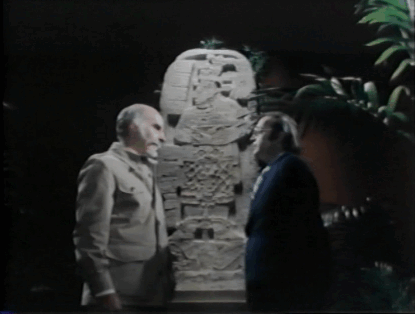
Above, left, Peter Tompkins was a New York Herald Tribune reporter and secret OSS agent during World War II who turned bestselling author in the 1970s with books like The Secret Life of Plants and others based on using psychics to help him investigate world archeological mysteries, especially the Great Pyramid and the Mexican pyramids. Here he confronts Jack Horkheimer, Director of the Space Transit Planetarium in Miami, with the assertion the Chakmal of Chichenitza was discovered 20 feet below the ground by psychic intuition. Moreover, that the Mayans knew of more stars in the Pleiades than we do with telescopes. Could they too have used psychic intuition?
Jack Horkheimer: “Well, I really don’t believe in psychic intuition. However, sometimes it appears that it works.”
Peter Tompkins: “It works than the proof is in the pudding.”
Yes, and no. I use this old example because it is really a very relevant example. Atlantis was incredibly popular in 1976 when the above was filmed for The Force Beyond, one of many “New Age” documentaries made in the ever-broadminded 1970s. It was so hot because of the apparent fulfillment of a clairvoyant prophecy made decades before by Edgar Cayce. He had called the Great Bahama Bank “Poseidia,” declaring it had been the last remnant of Atlantis to sink. He had predicted this portion of Atlantis would rise again in 1968. In apparent fulfillment, unexplained ruins began to appear on the shallow banks in July 1968. In one case, dives by oceanographer Dr. J. Manson Valentine discovered the Bimini Road.
Valentine was a Yale cum laude graduate, once curator of the Bishop Museum in Honolulu. Among many other accomplishments, he discovered new species of beetles. He was a botanist, zoologist, and had several degrees. Yet Valentine loved archeology and believed in psychic powers. Although the event made news, the details really came to us through an interesting conduit.
He collaborated on a book with Charles Berlitz, Mysteries from Forgotten Worlds (1972), showcasing his archeological discoveries in the Bahamas. It wasn’t too big a seller. But Doubleday agreed to publish their next venture: The Bermuda Triangle, which tied in the ruins he discovered to a greater, far reaching Atlantis and even possibly one cause for the many disappearances of ships and planes in the Triangle. You see, Cayce’s Atlantis was a super civilization with highly advanced 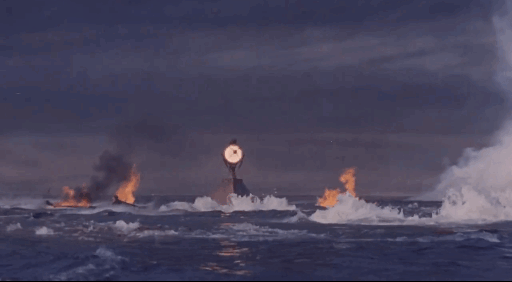 technology, some of which it channeled through a powerful crystal, and Valentine believed Cayce’s readings. It was a stunning bestseller in the Seeking Seventies. technology, some of which it channeled through a powerful crystal, and Valentine believed Cayce’s readings. It was a stunning bestseller in the Seeking Seventies.
Atlantis sinks in George Pal’s movie, the powerful Tuai Stone atop the pyramid is last.
Perhaps society was sufficiently titrated on the whole idea. No less than George Pal had tried to capitalize on Cayce’s fantastic clairvoyant concept of Atlantis in his 1961 movie Atlantis: the Lost Continent.
Now, such an Atlantis seemed justified by a fulfillment of a specific prophecy. The proof was in the pudding, no different than when psychic detectives help police forces find missing persons or evidence. The same psychic powers could be directed at verifying even more of Cayce’s fabulous Atlantis.
I inherited the theory, and somewhat objectively it is my duty to walk the reader through it. Cayce himself rather requires it. Free of his trances, he was surprised he spoke so much of Atlantis. When recited back to him, he remarked: “I wonder where that came from and if there is anything to it.”
To begin to find the answer, we must enter this Atlantis through the mind of clairvoyant Edgar Evans Cayce (1877-1945). He was known as the “Sleeping Prophet” because he induced himself 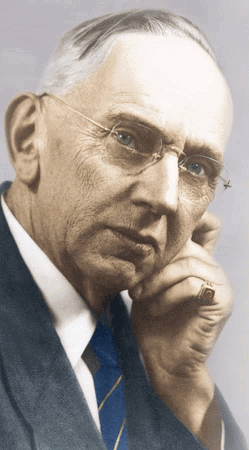 into a sleeping trance state in order to give “life readings” to those who inquired about their past lives. Before his death in 1945 these amounted to thousands of “readings” covering a wide range of health, history, the future and, sometimes, Atlantis. into a sleeping trance state in order to give “life readings” to those who inquired about their past lives. Before his death in 1945 these amounted to thousands of “readings” covering a wide range of health, history, the future and, sometimes, Atlantis.
A well-known picture of Edgar Cayce.
Cayce’s readings were “life readings.” In his clairvoyant states he was seeing the past life of the individual (entity) requesting the reading. Surprisingly, many of those before him had past lives in Atlantis, and they were so informed what they did there. Yet describing their past lives, he couldn’t avoid describing conditions and circumstances. “ . . .entity was associated with mechanical appliances and their application . . . And as we find it was a period in which there was much that has not even been thought of yet, in the present experience.”
This Atlantis evolved consistently over 20 years of “life readings.” It was a super-civilization that colonized the world and eventually broke apart and sank. As already noted, the great underwater plateau of the Bahamas, called Poseidia, was its last remnant to sink. This was about 11,000 years ago, so the period Plato also placed the sinking of Atlantis. His “readings” on Atlantis were given between 1924 and 1944.
Up until this time the pursuit of Atlantis had been one of trying to unravel Plato’s tale, plus add a little archeology in the Aegean and a lot of speculation. But the spiritualists, as already noted, had taken keen interest in Ignatius Donnelly’s motif.
While Donnelly’s was very bold for the times, Edgar Cayce’s approach to Atlantis was even more remarkable but in many ways filled in the gaps a purely historic investigation could not. It was also more in line with some Biblical inference of the Nephilim. Like Donnelly’s work, Cayce (in trance states) spoke of Atlantis as where man first developed civilization. However, Donnelly only assumed a Sumerian/Egyptian type of culture. Caycean Atlantis was a stupendous super civilization with electromagnetic powered flying machines, lasers, power crystals, and devices which we cannot even understand.
One suppliant requested in 1930. Cayce spoke: “In Poseidia the entity dwelt amongst those that had charge of the storage of the motivative forces from the great crystals that so condensed the lights, the forms of the activities, as to guide the ships in the sea and in the air and in conveniences of the body as television and recording voice.”
Collective readings indicate the ultimate power source was something natural, within the earth or invisible energy. He describes forces that seem to parallel our own ideas of zero-point-energy. It was directed by use of the crystals called Tuai Stones. Atlanteans had overcome gravity. They had remote controlled flying and hovering craft, and constant power through the harnessing of this natural energy.
A patchwork quotation from Edgar Cayce on Atlantis (1968), yields some of his descriptions of what the Atlanteans were using.
About the firestone. . . In the center of a building which would today be said to be lined with nonconductive stone something akin to asbestos with. . .other nonconductors. . .The building above the stone was oval; or a dome wherein there could be. . . a portion for rolling back, so the activity of the stars, the concentration of energies that emanate from bodies that are on fire themselves . . . The concentration through the prisms or glass (as would be called in the present) was in such a manner that it acted upon the instruments. . . The preparation of this stone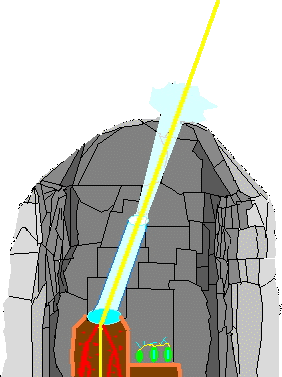 was solely in the hands of the initiates at the time . . .[entity] among those who directed the influences of the radiation which arose, in the form of rays that were invisible to the eye but acted upon the stones themselves as set in the motivating forces. was solely in the hands of the initiates at the time . . .[entity] among those who directed the influences of the radiation which arose, in the form of rays that were invisible to the eye but acted upon the stones themselves as set in the motivating forces.
Cayce’s “readings” blamed Atlantis’ eventual destruction on the misuse of these powers, especially gravity.
. . .in Atlantean land at time of development of electrical forces that dealt with transportation of craft from place to place, photographing at a distance, reading inscriptions through walls even at a distance. . .overcoming gravity itself, preparation of the crystal, the terrible mighty crystal; much of this brought destruction.
Again, evil dominated and authority misused these forces:
With the continued disregard of those who were keeping the pure race and the pure peoples, man brought in destructive forces to be used by people that were rulers. These destructive forces combined with those natural resources of the gases, of the electrical forces made in nature, caused volcanic eruptions in the slow cooling earth, and that portion now near what would be termed the Sargasso Sea first went into the depths . . .
Just what does all this have to do with the Bermuda Triangle? Just what does all this have to do with the investigation of very tangible objects like missing ships and planes? Once again, Cayce said the Bahama Banks were the last part of Atlantis to sink, and the last place where these glorious advanced devices went below to the depths. The Bahamas are also the place in the Triangle where the most unusual disappearances occur and where the most unexplained electromagnetic phenomena are encountered. Since Atlantean energy devices were designed to tie-in and even disrupt natural energy forces, the theory is that natural (even zero-point) energy causes them to sporadically pulse and they create time windows, electromagnetic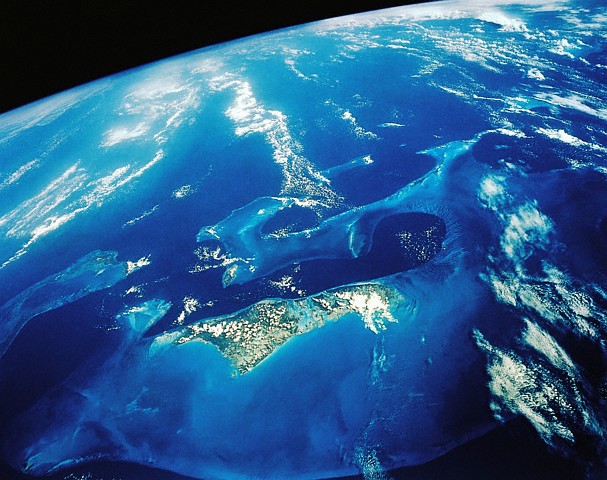 warps and vortices, and even disintegration. In short, can there really be the old Tuai stones beneath the sea still channeling natural energy and occasionally causing electromagnetic havoc? warps and vortices, and even disintegration. In short, can there really be the old Tuai stones beneath the sea still channeling natural energy and occasionally causing electromagnetic havoc?
The Great Bahama Bank, as seen from satellite— a huge island with that strange chasm “The Tongue of the Ocean.” It is the perfect backdrop for a cataclysmic sinking of an ancient society. (Corbis, used under license).
We come back to the “proof is in the pudding.” Has anything Cayce predicted been fulfilled so that credibility might be given his trance visions? The viability of the theory was put in place by a string of coincidences, nothing more, though extremely intriguing. Together they build a strange case of circumstantial evidence that has been pursued, first in the hands of true believers.
Cayce predicted: “Poseidia will be among the first portions of Atlantis to rise again — expect it '68 and '69 — not so far away.” (June 28, 1940)
Bob Brush and Trigg Adams were well-known pilots in the area. Nearing Andros Island on a routine flight in 1968 they noted what looked like the ruins of a square temple under the shallow waters. They likened its dimensions to the Temple of the Turtles in Yucatan. They noticed the outline and could make such distinctions because both were members of A.R.E., the Cayce foundation’s Association of Research and Enlightenment and were hopeful of Cayce’s prophecy coming true this year. Writing in Mysteries from Forgotten Worlds (1972), Charles Berlitz was cautious of 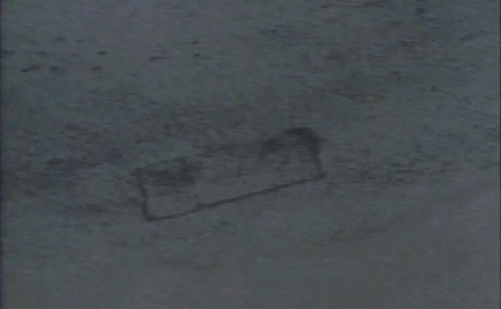 the duo’s discoveries: “Naturally, what seems like revelation to the people who believe in Cayce’s prophecies seems like pure coincidence to those who view all unfamiliar phenomena with a coldly scientific eye.” the duo’s discoveries: “Naturally, what seems like revelation to the people who believe in Cayce’s prophecies seems like pure coincidence to those who view all unfamiliar phenomena with a coldly scientific eye.”
Today, this structure is believed to have been a native sponge pen built in the 1930s.
But sightings and aerial discoveries would continue over various Bahamas locales. The exciting discoveries would culminate that year in the dive off Bimini on Labor Day, when Dimitri Rebikoff, Jacques Mayol, Bob Angove, and Dr. J. Manson Valentine made the sensational discovery of the Bimini Road.
This could be taken as fulfilling a specific 1933 prophecy about where records were kept of such fantastic power devices as Atlantis possessed. “As indicated, the records as to ways of constructing same are in three places in the earth, as it stands today: in the sunken portion of Atlantis, or Poseidia, where a portion of the temples may yet be discovered under the slime of ages of sea water — near what is known as Bimini, off the coast of Florida.”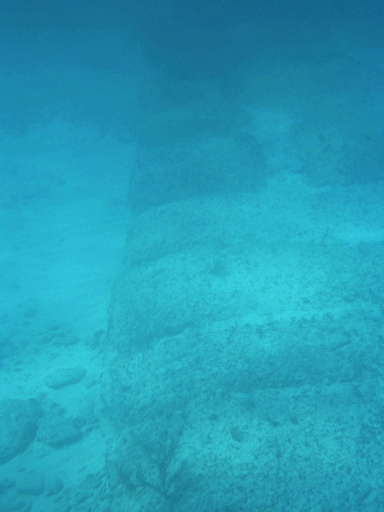
No year was given in the reading, but as it might be expected the series of sightings over 1968 indicating “Atlantis was rising” attracted enough interest to view the discovery of the Bimini Road as linked with Cayce’s 1933 prediction.
Right, just a fraction of the Bimini Road. The whole structure is an inverted “J” about 1,200 feet long, with parallel “roads” or fallen walls. Photo courtesy Bimini Brown.
Manson Valentine’s discovery was something quite remarkable and continued to be investigated by divers. But does it validate Peter Tompkins’ quote at the beginning of this page? Does Cayce become a proven source to inspire a search of the Bahama Banks for “Atlantis Rising?” Some would say yes, citing some collateral scientific studies.
It may sound fantastic, but over the decades science has been probing into what creates “psychic” abilities in some people. Far from mocking it, some top scientists have postulated what may be responsible along physical lines, such as tachyons or superluminal particles, particles that, in effect, travel faster than the speed of light and are therefore extremely difficult for us to detect. Henri Bergson’s philosophy has been adapted in many ways, including the belief that drugs (LSD) may reactivate latent powers in people to connect with a greater universal consciousness or collective memory or electromagnetic grid. Others may still retain this ability naturally and are considered to be “sensitives” like Cayce.
The U.S. CIA now admits, as does the former Soviet, that psychic spying had been engaged in by both sides during the Cold War. “Remote viewing,” as it is often called today, is merely an extension of the old term “psychic” or “clairvoyant” or “Mental Medium,” and if the ability is real it is inherited or possibly acquired through drug administration in latent people.
But is making something unexplainable sound scientific enough to launch us onto a search through the psychic records for an answer for the Bermuda Triangle’s enigma of missing planes and ships and bizarre electromagnetic phenomena? Can Cayce’s Atlantis be seriously considered as potentially culpable for missing ships and planes?
Popular science says that Cayce was just subconsciously influenced by Donnelly’s Atlantis: The Antediluvian World and all the adaptations it had undergone in the spiritualist and artistic realms. It would be easiest to leave it there.
Yet that wraith, that dreaded wraith coincidence, still tempts. An old book by South American explorer Colonel Percy Fawcett (Lost Trails, Lost Cities) conveys to us that isolated Amazonian Indians spoke of great crystal discs in ruined temples buried deeply within Brazil, glowing columns, shafts of glass or crystal just like in Cayce’s readings. “My rancher friend told me he brought to Cuyaba an Indian of a remote and difficult tribe, and took him into the big churches here thinking he would be impressed. ‘This is nothing!’ he said. ‘Where I live, but some distance to travel, are buildings greater, loftier, and finer than this. They too have great doors and windows, and in the middle is a tall pillar bearing a large crystal whose light illuminates the interior and dazzles the eyes!’”
Mere boasting and nothing else? Yet Fawcett’s manuscript was finished in 1923, just before he set out on his final exploration of the Matto Grosso in Brazil. It was not published by his son, Brian Fawcett, until 1950. This, and other reports to follow were thus before Cayce started his readings, and they were not published until 5 years after Cayce died.
In another instance: “The city, said the Indians, had low stone buildings with many streets set at right angles to one another, but there were also some big buildings and a great temple, in which was a large disc cut out of rock crystal. A river running through the forest beside the city fell over a big fall whose roar could be heard for leagues, and below the fall the river seemed to widen out into a great lake emptying itself they had no notion where. In the quiet water below the fall was the figure of a man.” (pg 298 Lost Trails, Lost Cities)
Stories of a “light that never went out” fascinated Fawcett. Indians far and wide spoke of it dwelling in ancient, hidden cities. Yet again: “At the ranch of Colonel Hermenegildo Galvao I was told that an Indian chief of the Nafaqua tribe, whose territory lies between the Xingu and Tabatinga Rivers, claimed to know of a ‘city’ where the Indians dwelt, and where there were temples and baptismal ceremonies. The Indians there spoke of houses with ‘stars to light them, which never went out.’ This was the first but not the last time I heard of these permanent lights found occasionally in the ancient houses built by that forgotten civilization of old. I knew that certain Indians of Ecuador were reputed to light their huts at night by means of luminous plants, but that, I considered, must be a different thing altogether. There was some secret means of illumination known to the ancients that remains to be rediscovered by the scientists of today — some method of harnessing forces unknown to us.” (pg 234 Lost Trails, Lost Cities)
Odd coincidences indeed. But many more have followed.
Another odd coincidence, below. There is this photograph here, given to me by Bruce Gernon for my book on the Triangle. It was taken in 1999 and shows the phenomenon of the “glowing waters.” Although what is causing this phosphorescence to vent up from the Bahama Bank bottoms is a mystery, it is not in this that our interest is incited.
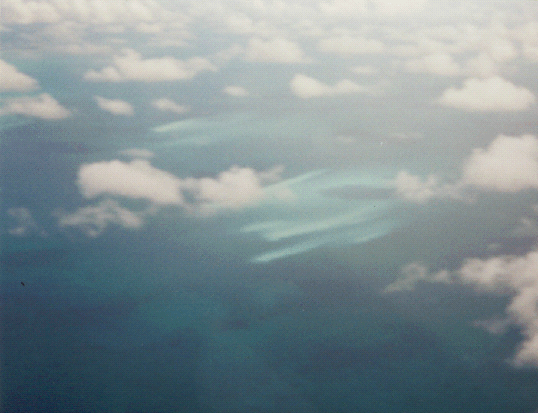
In this photo you will notice a neat circle of clear water in the midst of the blotch of “white” or “glowing” waters. Something below is repelling the phosphorescence of the water, something that forms an almost perfect funnel. For this brief moment, the presence of something below has been highlighted, something that otherwise would be invisible, 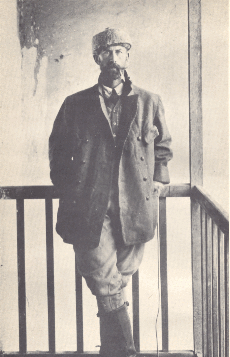 something either radioactive or . . . ? something either radioactive or . . . ?
Colonel Percy Fawcett, LEFT. His announcement in 1924 that he was leaving on his 8th expedition to seek the location of a legendary buried city in the heart of Brazil (Lost City of Z) was world news. From this expedition he and his party never returned.
Coincidentally, in 1924, that same year, Cayce’s readings on Atlantis begin, describing novel “electrical” apparati. Some can argue that Cayce was merely inspired by Fawcett and Donnelly. If so that doesn’t alter the fact we still have Indians in the heart of Brazil talking about novel energy crystals and columns in old ruined cities tumbled by some prehistoric cataclysm.
That none of the ruins Fawcett heard about (or told us about) have been yet discovered in the Amazon should not deter us from believing there is some truth to the Amerindian recollections, however thin. He also wrote something we should take to heart: “Why should it be supposed that the ancient cities, if they exist at all, must necessarily be in the region where the traditions about them are heard? Time and time again I have found that the Indian has no conception of distance and gives one the impression that something actually remote is relatively near. The Indian child may hear from his mother of a wonderful city “over yonder,” and grow up to believe that it is somewhere just beyond the limits of the tribe’s movements. Yet the tale may have been passed down from generation to generation, from a remote past when the tribe was part of a nation, before cataclysms drove the people into a nomadic existence. To hear tales of an ancient city in the vicinity of certain Indians, and then to find that nothing of the sort exists, must not be taken as evidence that the traditions have no grounding in fact. Time means less to the primitive peoples than it does to us. They can trace their ancestry back for thousands of years when we can seldom trace ours for hundreds, and occurrences dating from antiquity are related as recent happenings. This is one of the greatest difficulties in locating the old places, and to ignore it is to lose both time and confidence.”
Fawcett’s book is intriguing because so much of his information is from the real world, whether it is coincidence or not with Cayce is another matter. When he did inquire of psychics, it did not echo Cayce’s super civilization, but it did reveal an Atlantean origin for the cities he sought in Brazil. He had come into possession of an old black basalt carved idol, given him by H. Rider Haggard who had obtained it in Brazil. It had a strange “electric” property and some people couldn’t handle it for long.
“I could think of only one way of learning the secret of the stone image, and that was by means of psychometry — a method that may evoke scorn from many people, but is widely accepted by others who have managed to keep their minds free from prejudice. Admittedly, the science of psychometry is yet in its infancy in our western countries, though highly developed in the Orient; and great care must be taken to sift out from the results the crumbs of telepathic communication liable to mix with it. It is based on the theory that every material object preserves in itself the record of its physical vicissitudes, and that this record is available to a person sensitive enough to tune in to the particular vibrations involved. The analogy of a radio receiver is by no means out of place, for the science of radio communication is delving deep into what a hundred years ago would have been regarded as rank superstition. Anyway, I am going to give the facts and leave it to you to accept or reject them, as you please. Many stranger examples of telepathy have been recorded.”
That Atlantis was the origin of the ancient lost cities he sought was evident in the first sentences of the sensitive’s reply: “I see a large irregularly shaped continent stretching from the north coast of Africa across to South America. Numerous mountains are spread over its surface, and here and there a volcano looks as though about to erupt. The vegetation is prolific, and of a tropical or sub-tropical nature.”
Psychically transported to the west and most civilized side of the continent, the psychic describes: “The country is hilly, and elaborate temples are partly hewn from the faces of the cliffs, their projecting facades supported by beautifully carved columns. Processions of what look like priests pass in and out of these temples, and a high priest or leader is wearing a breastplate similar to the one on the figure I am holding. Within the temples it is dark, but over the altars is the representation of a large eye. The priests are making invocations to this eye, and the whole ritual seems to be of an occult nature, coupled with a sacrificial system, though whether human or animal I cannot see.”
“Placed at various parts of the temple are a few effigies like the one in my hand — and this very one was evidently the portrait of a priest of high rank. I see the high priest take it and hand it to another priest, with instructions to retain it carefully, and in due course deliver it to an appointed one, who in turn must pass it on until at length it comes into the possession of a reincarnation of the personage it portrays, when numerous forgotten things will through its influence be elucidated.”
Then: “I hear a voice saying: ‘See the fate of the presumptuous! They count the Creator as under their influence and subject to their powers, but the day of retribution has come. Wait and watch!’ Then I see volcanoes in violent eruption, flaming lava pouring down their sides, and the whole land shakes with a mighty rumbling sound. The sea rises as in a hurricane, and a huge portion of land on both east and west sides disappears under the water, leaving the central part flooded but visible. The majority of the inhabitants are either drowned or destroyed by the earthquakes. The priest to whom the effigy was given rushes from the sinking city towards the hills, where he places the sacred charge in hiding and then continues his flight eastwards.”
“The voice says: ‘The judgment of Atlanta will be the fate of all who presume to deific power!’”
“I can get no definite date of the catastrophe, but it was long prior to the rise of Egypt, and has been forgotten — except, perhaps, in myth.”
The psychic never spoke of a super-Atlantis, and this must be kept in our minds, but Fawcett had obviously come to believe that it had a high degree of technological power which was slowly lost after cataclysm. It was that light source that “never goes out.” Far and wide he heard tell of it. In searching some old ruins, he wrote: “However, they do show what will later be recognized as important — windowless houses with narrow entrances, their interiors free from the grime associated with every cooking or illuminating agency known to us except electricity!” (page 266 ibid)
Again: “Our route will be from Dead Horse Camp, 11o 43' south and 54o 35' west, where my horse died in 1921, roughly northeast to the Xingu, visiting on the way an ancient stone tower which is the terror of the surrounding Indians, as at night it is lighted from door 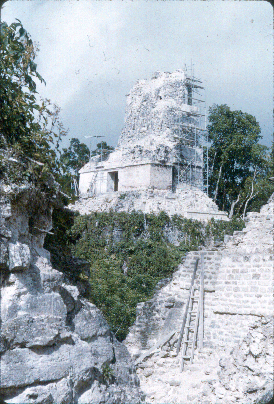 and windows.” and windows.”
Again: “The intermediate building between 'Z' and the point where we leave civilization is described by the Indians as a sort of fat tower of stone. They are thoroughly scared of it because they say at night a light shines from door and windows! I suspect this to be the ‘Light that Never Goes Out.’” (pg 298 ibid)
What it must look like to discover a ruined city in the jungle. Tikal, Guatemala.
I’m not one to embrace the psychic avenue of investigation. Unless there are predictions that can be reconciled in the real world, what’s the point? What I am saying is this: If a so-called psychic says a stash of gold will be found in a certain location, this prediction can be reconciled. You go to the location and dig. If you find it you begin to study the “psychic.” Did they already know it by some other means? Are they trying a con? Are they for real? If there is no gold, it is easy— they are a nut.
Percy Fawcett believed he was doing the above. From all the firsthand knowledge he had gleaned in surveying South America, he— Well, in his own words: “The existence of the old cities I do not for a moment doubt. How could I? I myself have seen a portion of one of them — and that is why I observed that it was imperative for me to go again. The remains seemed to be those of an outpost of one of the bigger cities, which I am convinced is to be found, together with others, if a properly organized search is carried out. Unfortunately, I cannot induce scientific men to accept even the supposition that there are traces of an old civilization in Brazil. I have travelled much in places not familiar to other explorers, and the wild Indians have again and again told me of the buildings, the character of the people, and the strange things beyond.” (pg 281 ibid)
Time has proven Fawcett’s earlier words true. Whatever the Indians are recalling, if anything real, it is not close-at-hand to Brazil and may be far back in time as it is as far away from the Matto Grosso.
When it comes to the Bimini Road, “Atlantologists” believe they have succeeded where Fawcett failed (at least to return to tell of it). For them, the Bimini Road verifies psychic powers. Psychics continue to search the Bahamas for more of Cayce’s fantastic Atlantis.
When Charles Berlitz and J. Manson Valentine collaborated on a book on the Bermuda Triangle, neither could see it would sell 5 million copies. Through prophecy and Valentine’s apparent fulfillment the book projected to the mainstream the potential reality of this vanished Atlantis and its deadly power sources corrupting the Earth’s natural force fields locally. Thus, at the very least, the Bermuda Triangle’s electromagnetic oddities— compasses spinning, radio dead spots, strange glowing waters venting up, unstable bottoms and scarred shallows— could be a remnant of this fantastic super civilization and leftovers of its abuse of nature. Since the Triangle is also a geographic location, a study of this Atlantis becomes unavoidable. It is a journey through the mind, through coincidences, into the past, and even below the sea.
It cannot stay in the mind anymore. It must start at Bimini.

 
|

